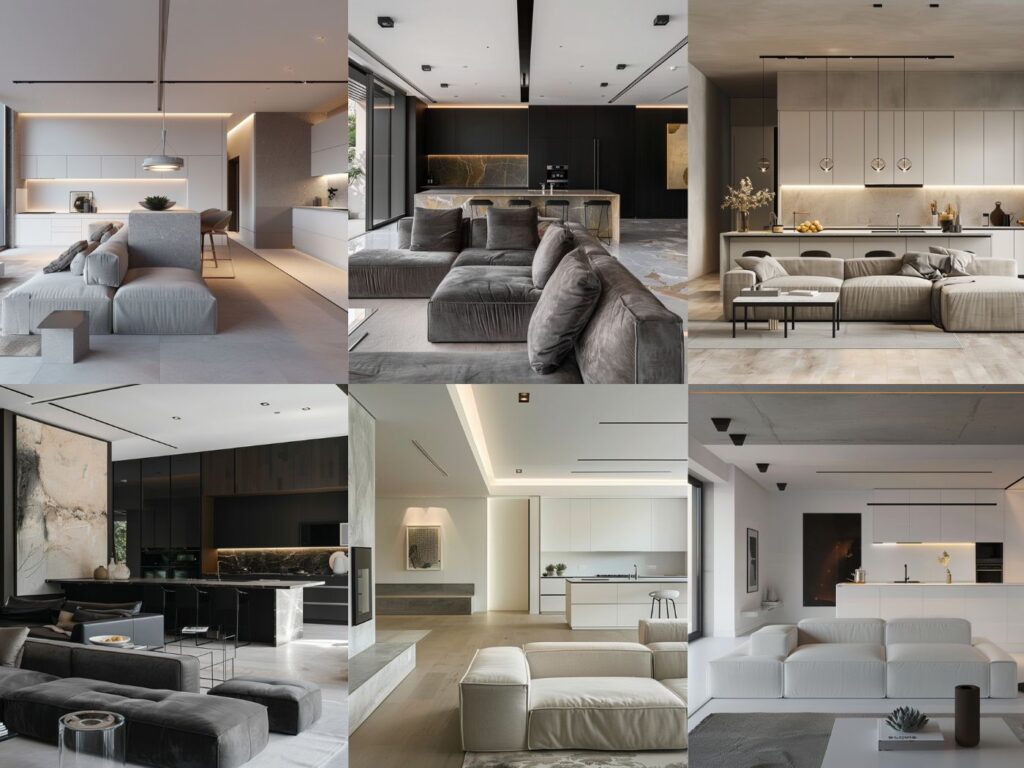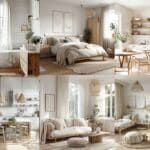Are you feeling overwhelmed by clutter and craving a sense of calm and order in your living space? Minimalist interior design, a close cousin to modern interior design, may be the solution you’ve been searching for.
By focusing on simplicity and functionality, minimalism transforms your home into a serene sanctuary where every element serves a purpose.
Imagine walking into a room where clean lines and open spaces greet you, allowing your mind to breathe and your stress to melt away. Minimalist design isn’t just about reducing the number of items in your home; it’s about creating an environment that promotes peace and clarity.
Ready to discover how you can achieve this tranquil atmosphere? Let’s explore the principles and benefits of minimalist interior design.
Top 11 Minimalist Decor Ideas and Styles
#1. Minimalist Simple Open Kitchen Living Room

#2. Minimalist Open Kitchen Living Room Table
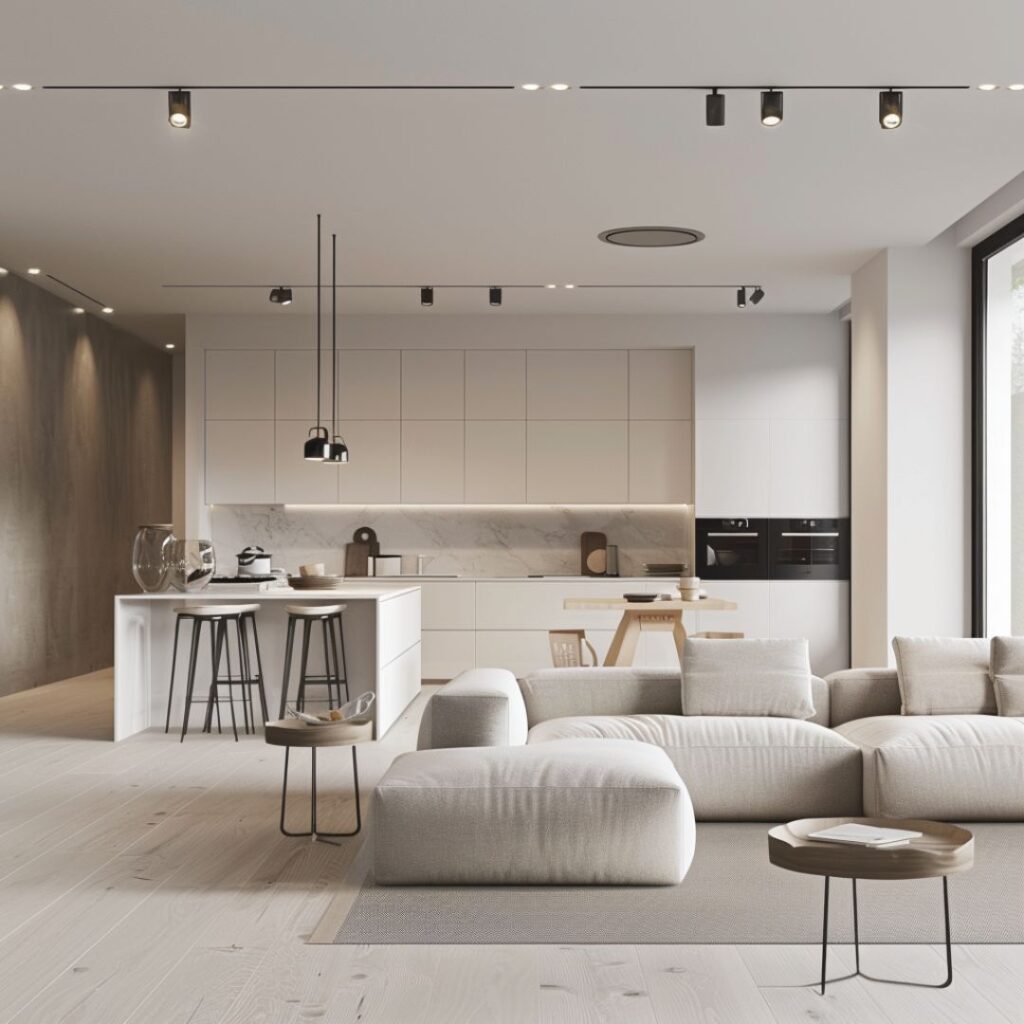
#3. Minimalist Open Kitchen Living Room Style

#4. Minimalist Open Kitchen Living Room Position
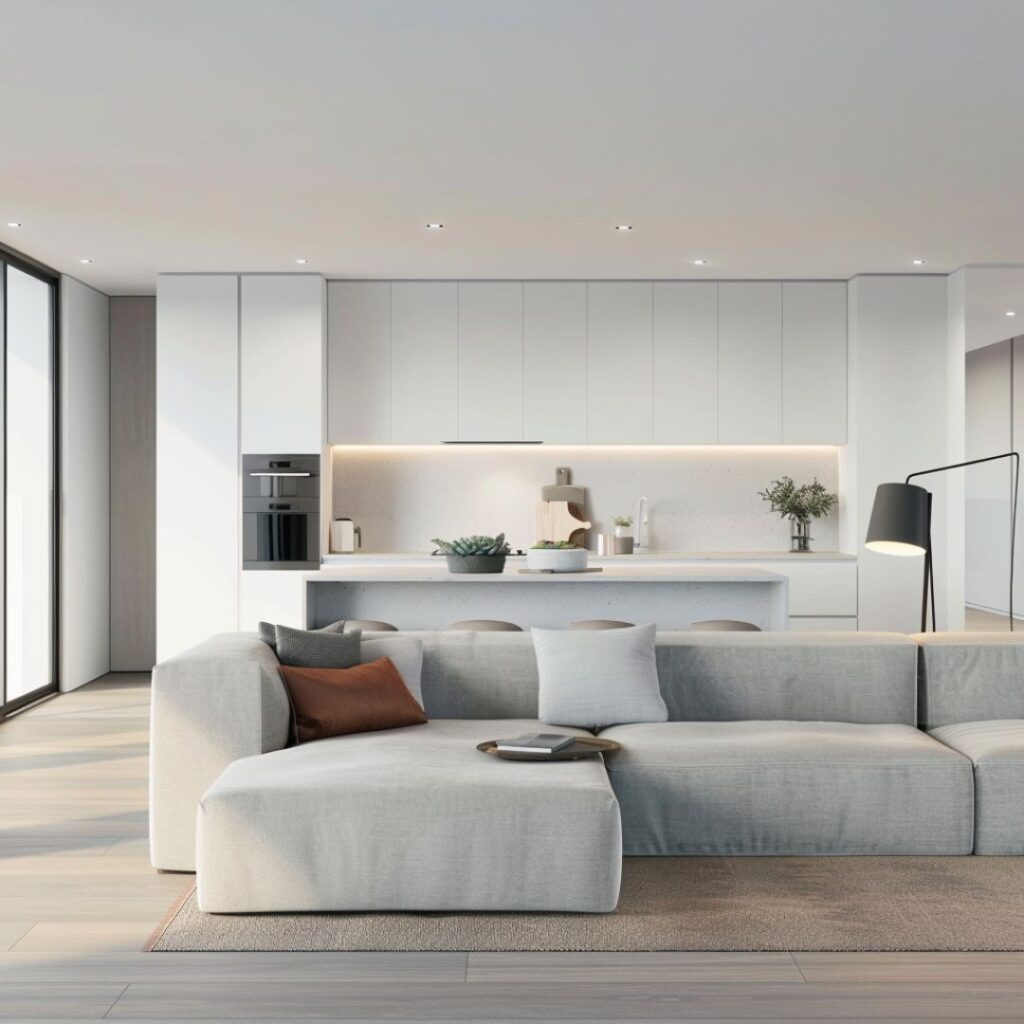
#5. Minimalist Open Kitchen Living Room Light

#6. Minimalist Open Kitchen Living Room Decorations
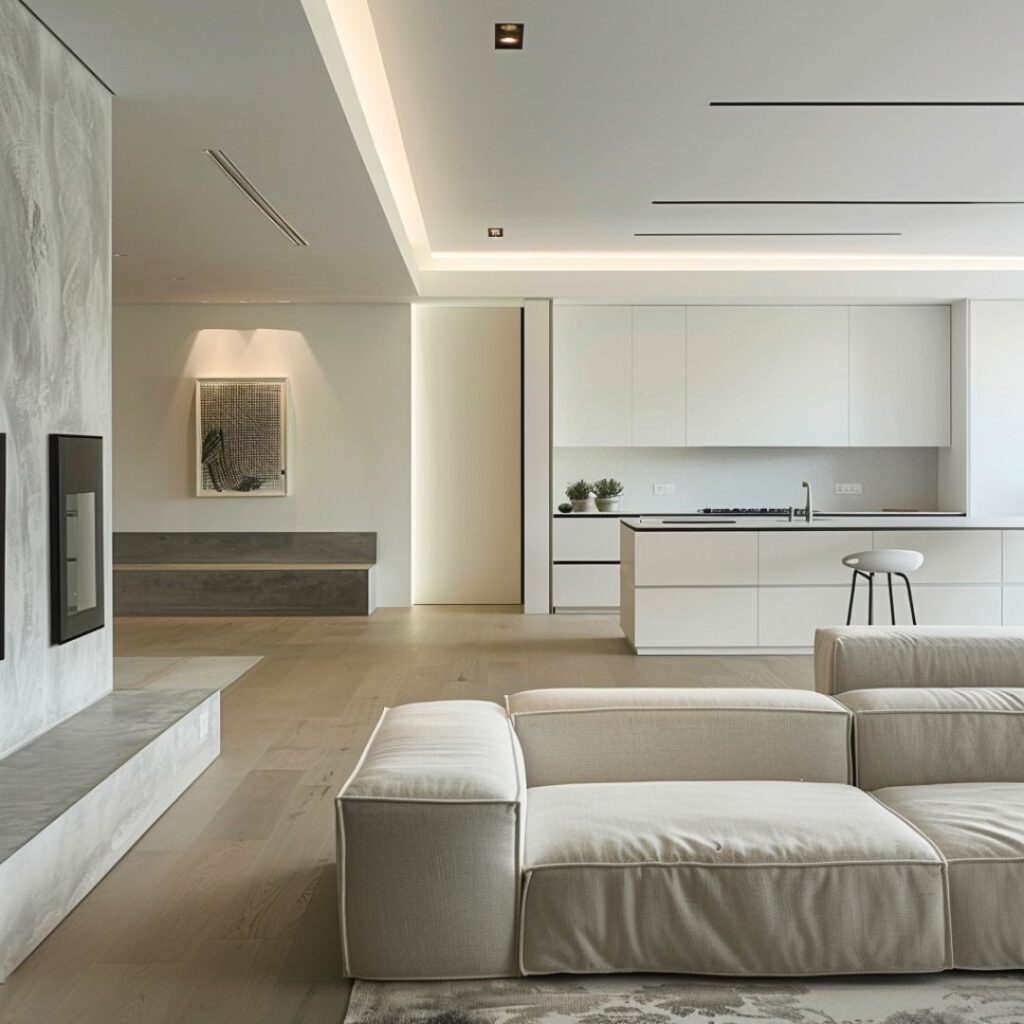
#7. Minimalist Open Kitchen Living Room Cupboard

#8. Minimalist Open Kitchen Living Room Chairs
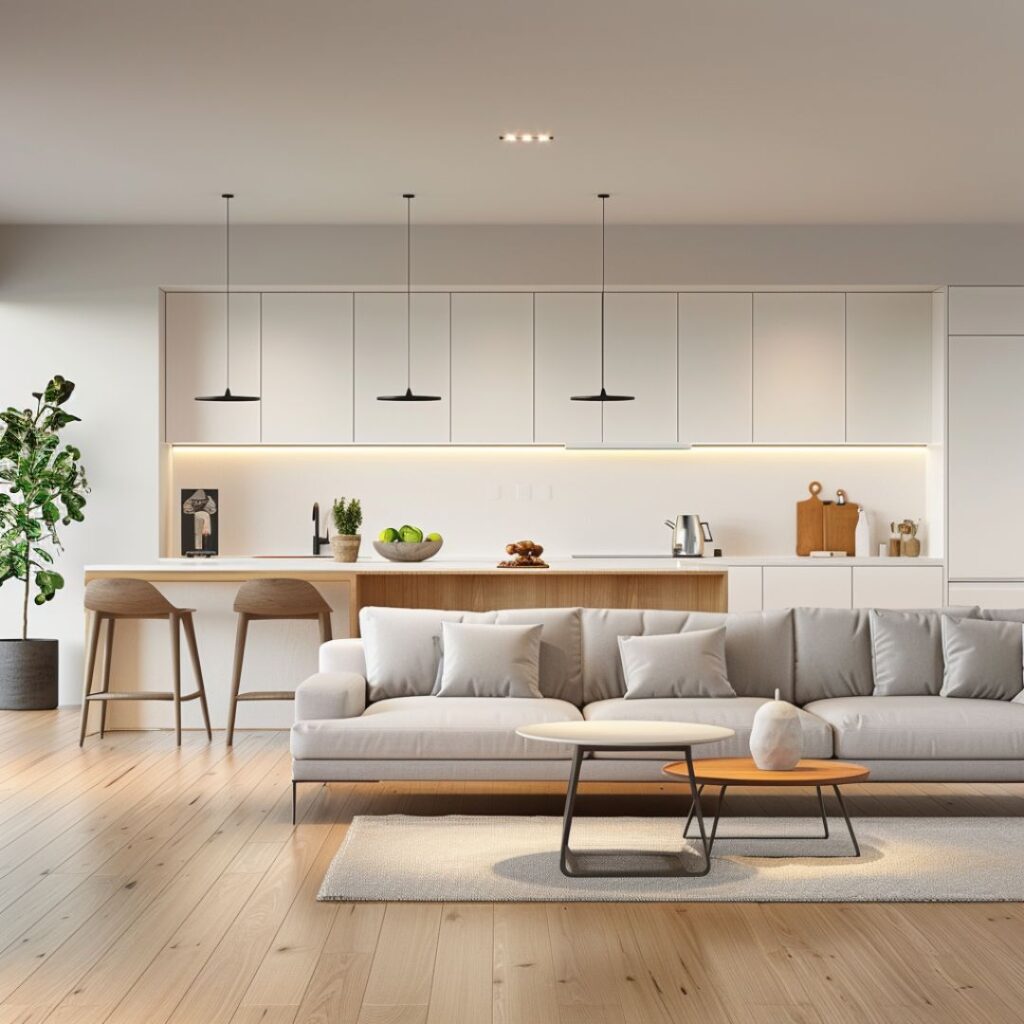
#9. Minimalist Open Kitchen Living Room
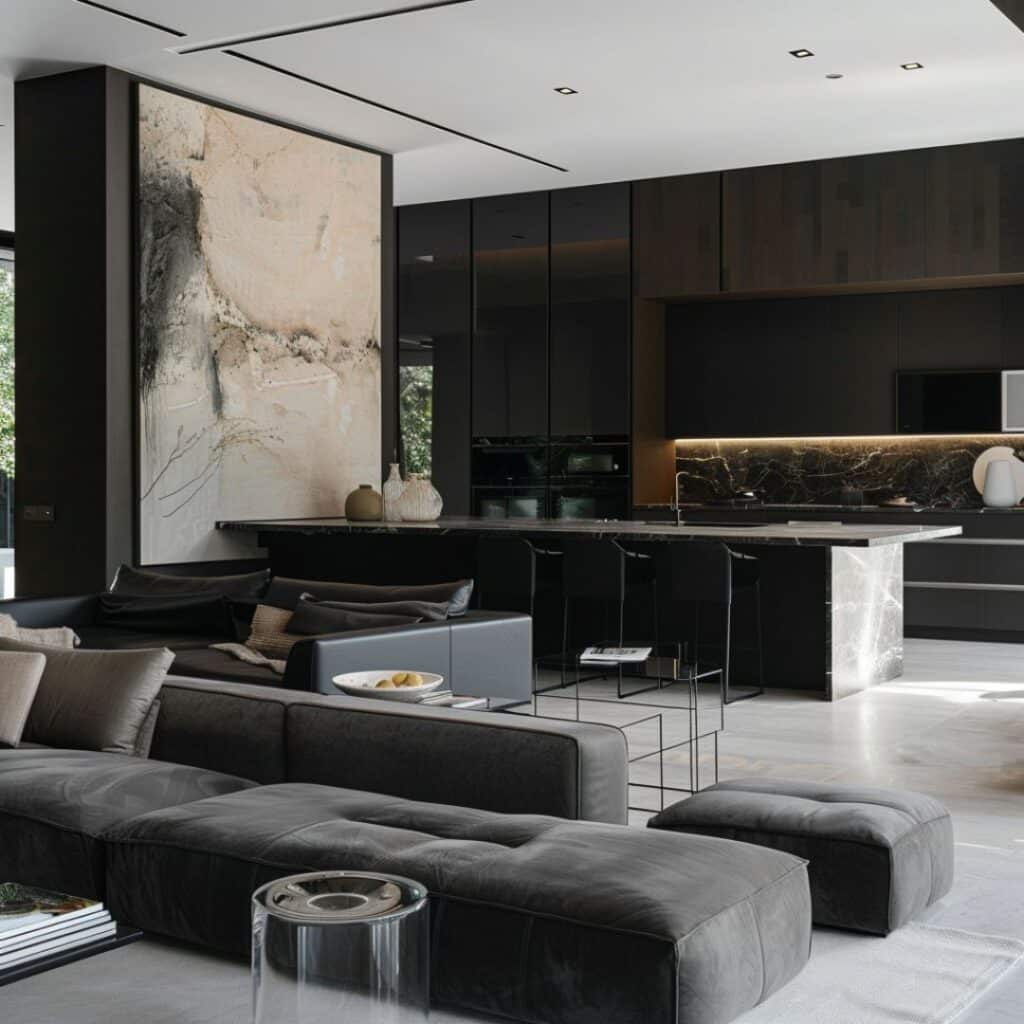
#10. Minimalist Marble Open Kitchen Living Room
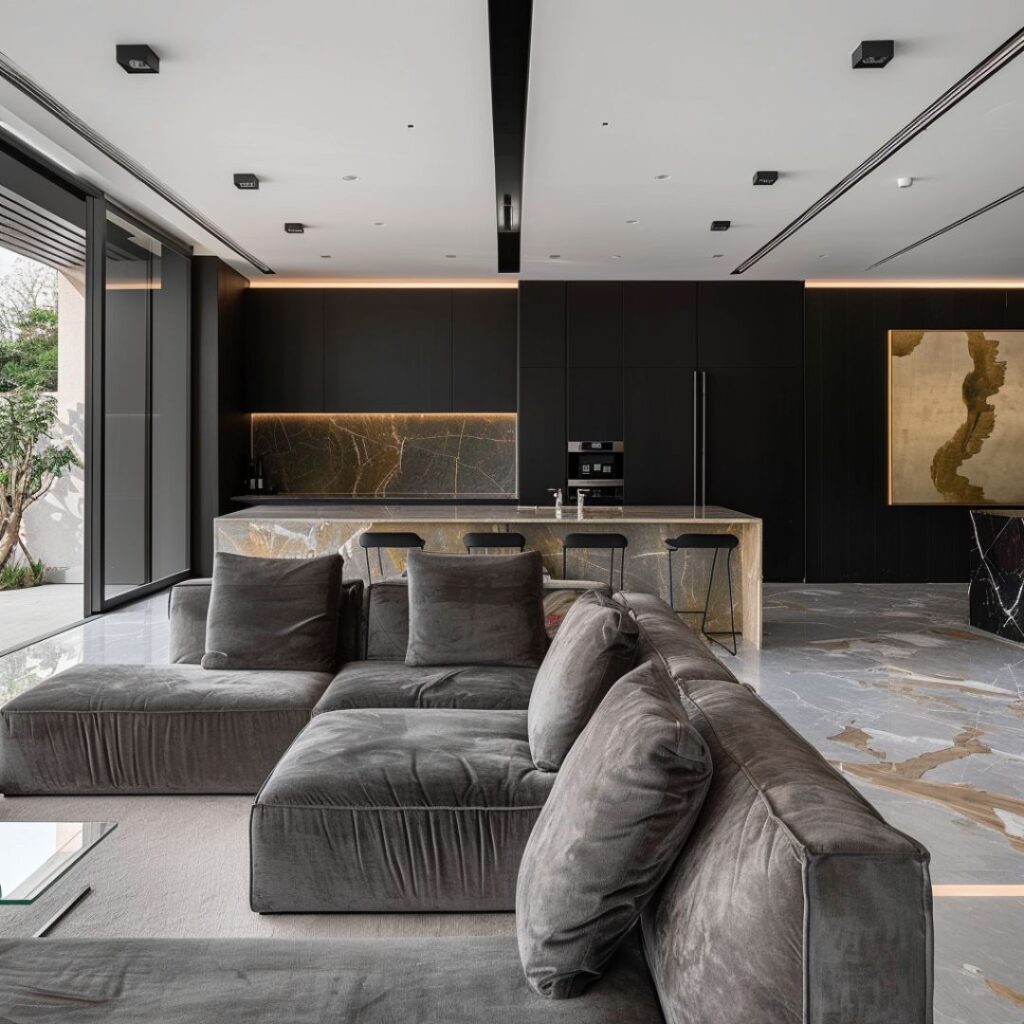
#11. Minimalist Indoor Plants Open Kitchen Living Room
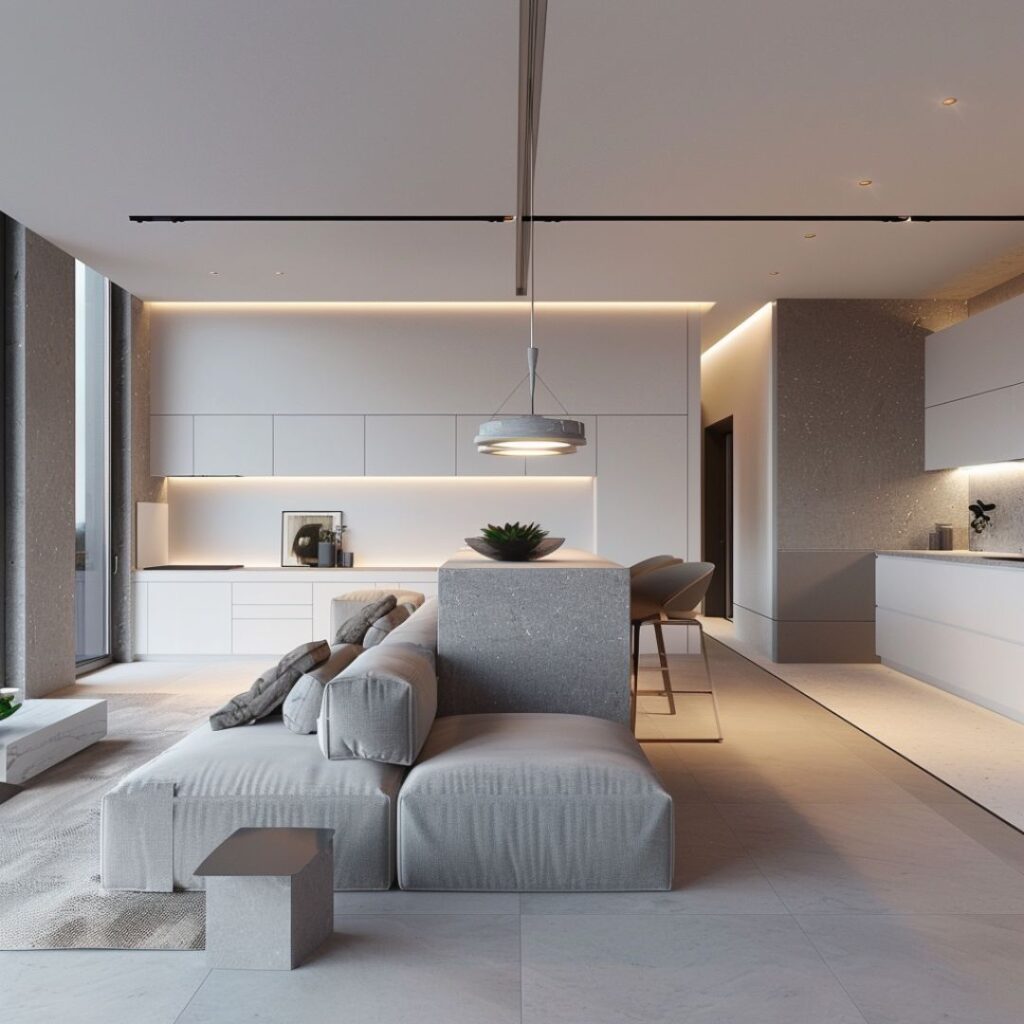
The Essentials of Minimalist Interior Design
To create a minimalist interior, focus on simplicity and functionality. This approach transforms your space into a serene haven.
Key Characteristics
Minimalist interiors feature clean lines and open spaces. Items are often multi-functional to reduce clutter. Furniture pieces have simple designs devoid of ornate details.
Storage solutions are discreet yet efficient. Built-in cabinets and hidden compartments keep items organized. Every piece serves a clear purpose to maximize utility.
Common Color Schemes
Color palettes in minimalist interiors are often neutral. Shades like white, beige, and gray dominate. These colors create a calm and coherent background.
Accent colors, if present, are subtle and sparse. A single muted color can break the monotony. This approach helps maintain visual consistency while adding a touch of warmth.
Choosing Furniture for a Minimalist Home
Minimalist interior design focuses on simplicity and function. Choosing the right furniture is essential for achieving this aesthetic in your home.
Selecting the Right Pieces
Opt for furniture with clean lines and geometric shapes. Avoid overly ornate items. Modular sofas, streamlined coffee tables, and sleek dining sets fit well in minimalist spaces. Look for dual-purpose items like storage ottomans and fold-out desks.
Importance of Function Over Form
Prioritize functionality in your selections. Choose pieces that serve multiple purposes, such as a bed with storage drawers. Items with hidden compartments help keep spaces clutter-free. Focus on practical furniture to maintain a serene and orderly environment.
Implementing Minimalist Principles Room-by-Room
Minimalist interior design extends tranquility and order to each part of your home. Applying these principles induces a holistic and cohesive atmosphere.
Living Room Design
Use neutral colors like white, beige, or gray for walls. Opt for furniture with clean lines and hidden storage. Include multi-functional pieces like a coffee table with storage space.
Bedroom Design
Choose a simple, streamlined bedframe. Utilize built-in wardrobes for clutter-free storage. Favor natural light by using sheer curtains.
Kitchen Design
Minimalist kitchens focus on maximum functionality. Select streamlined cabinets with flat fronts. Use built-in appliances to conserve counter space. Keep countertops clear except for essentials.
Benefits of Embracing Minimalist Interior Design
Choosing minimalist interior design carries significant benefits for both your mental well-being and daily living.
Psychological Benefits
Minimalist interiors reduce stress. Clutter-free environments provide a sense of calm. Neutral color palettes create a serene atmosphere, making your home a peaceful retreat. Clean lines and open spaces promote clear thinking and productivity by minimizing distractions.
Practical Benefits
Minimalist design maximizes functionality. Multi-purpose furniture saves space and serves multiple needs. Easy-to-clean surfaces and organized storage simplify maintenance. Durability is a hallmark, favoring quality over quantity, resulting in long-term savings.
Minimalism in interior design offers a harmonious blend of simplicity and function, enhancing both mental clarity and practical living.

